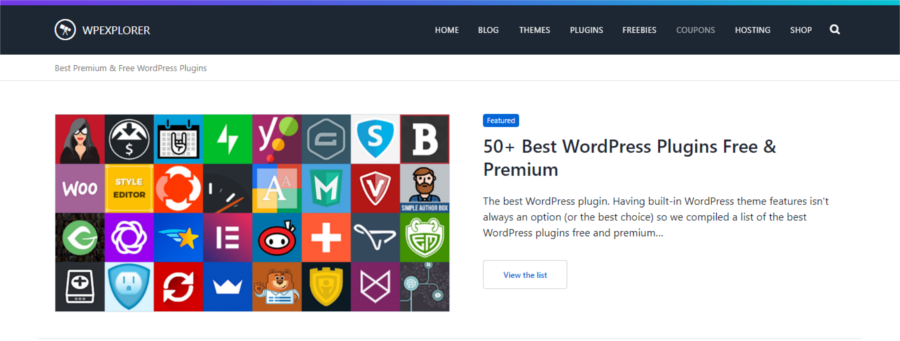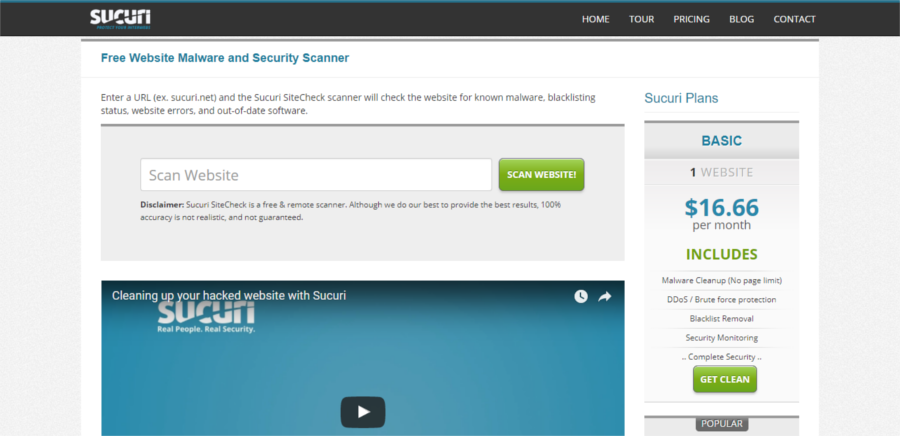Tal vez no pueda acceder al panel de control o la página de inicio de sesión de su sitio de WordPress. O su sitio Web simplemente no está actuando como lo hace regularmente. Si esto sucede, es posible que su sitio web de WordPress no funcione.
But don't worry, there may be a simple answer as to why your site is down. This short list of preliminary checks can help you keep a cool head when your WordPress website is down. Best of all, you can do these checks yourself before asking for help.
1. Rule out bad connections
As a first step, make sure all your connections are correct and connected to the proper jacks / ports. Make sure you are connected to the Internet properly. You don't want to break your head for two days and then find out that you have crossed wires.
2. Is it just you?
Habitualmente, sucede que el problema puede ser un problema general que afecta a muchos otros usuarios. Puede haber otras persons tratando de averiguar si su sitio web de WordPress está caído
To find out if that's the case, try some online services like (* 8 *) Below for everyone or just me. Esta herramienta verifica su sitio web desde múltiples ubicaciones, por lo que si el problema está en su computadora, usted lo sabrá. Simplemente ingrese la Url de cualquier sitio y sabrá si ese sitio web al mismo tiempo está inactivo. Otra herramienta que hace prácticamente lo mismo es Is this site down?.

If you find that you are the only one who cannot access your website, your next stop should be Whatsmydns. A "Site not found”O un error equivalente de forma general significa que su DNS no se ha actualizado. Esta herramienta lo ayudará a averiguarlo y no debe omitir esta verificación si ha cambiado recientemente el DNS de su sitio. A pesar de todo, tenga en cuenta que los cambios en el DNS regularmente pueden tardar entre 6 y 72 horas en actualizarse.
If your DNS is up to date, the next thing to do is try to force a page reload. To do this, click Ctrl + F5 on Windows (and Cmd + R en Mac). Esto le posibilita acceder a su página web de forma directa desde el server, sin pasar por las páginas almacenadas en cache.
Then view your site from different locations using proxy sites. If you can view your site this way, chances are you have network problems.
Finally, at the same time you can monitor the uptime of your website continuously. There are many tools like Pingdom available for this purpose. These tools check the health of your website by pinging from various locations at frequent intervals and notify you if your website is experiencing downtime.
3. Verifique la validez del domain
El nombre de dominio que compró en el momento de iniciar su sitio web viene con una fecha de vencimiento. ¿Ha perdido un aviso de renovación de subscription? Aún cuando muchos registradores extienden la validez durante aproximadamente 30 días después de la fecha de vencimiento, lo está presionando si tiene expectativas más altas.
Many web servers combine domain registration services with hosting. But if that is not your case, you should check if your subscription is up to date.

Go to Who and feed your website url. You will quickly know if your domain registration is still active, as well as many other details about your website domain.
4. Inaccessible website
Sometimes it can happen that your website is not really down, you just can't access it. This may be due to automatic WordPress updates not running properly.
In such cases, you can try to access your website using these quick solutions:
- WordPress is not fully updated: Sometimes right after a WordPress update attempt, you might get a scheduled maintenance error when trying to load any page. This is most likely due to a timeout before WordPress exited maintenance mode. WordPress creates a .maintenance during the update process, to indicate that your site is undergoing maintenance. You must remove this file from your site before you can access it again. Until then, you will likely only receive messages such as «Installation failed"OR"Briefly unavailable due to scheduled maintenance error in WordPress". Still, it is always a good idea to read more about how to safely update WordPress.
- Incorrect file permissions: Proper file permissions are important for automatic update to work properly. WordPress uses the htdocs / Yoursite / wp-content / upgrade directory for the temporary file that you create during the installation process and must have write permissions. Once you have done this, try updating automatically again.
- Disable safe mode: Try disabling safe mode on your httpd.config archivo, después reinicie Apache.
- Choose Manual Update: If you happen to get a «Fatal errorOpt for a manual update.
Otras razones podrían ser que la memoria de PHP esté agotada o el tiempo de espera del servidor, y deberá solucionar un poco los problemas de WordPress aquí.
5. Account suspended
Most hosting services suspend your account if it hasn't been paid for for a while. Typically, you will receive an email from your host informing you when a payment has not been processed, so it may not have gone through. Make sure your billing information is up to date to avoid suspension of hosting services.
6. Your server is down
If your server is experiencing downtime, you will not be able to access your website at all. Even though you may get a message that your server will experience downtime, sometimes it won't, it's easy to forget. Any resource intensive use of server resources that exceeds bandwidth limits at the same time can cause your website to go down.
Start checking by simply refreshing the page, and if it's a temporary problem, it will most likely resolve itself.
A continuación, considere si el servicio / paquete de alojamiento que ha seleccionado es el adecuado para su sitio web. Si ha optado por un alojamiento web económico, es posible que los servidores host no le brinden suficiente soporte para un tiempo de actividad del 100%. El tiempo de inactividad puede ocurrir con más frecuencia con un alojamiento más barato que no es compatible con la infraestructura adecuada, y su única solución es esperar o hablar por teléfono con su proveedor de servicios. O puede elegir por cambiar a servicios de hospedaje de calidad como Bluehost (donde los lectores de R Digital marketing pueden obtener un descuento del 63%), o por soluciones de hospedaje administradas por WordPress como WP Engine.

Servicios como Bluehost lo mantienen informado sobre las interrupciones del servidor, pero al mismo tiempo puede visitar el cPanel para verificar el estado de su cuenta. Nuevamente, es una buena idea configurar una herramienta de monitoreo de tiempo de actividad automática y tan pronto como se le notifique el tiempo de inactividad, póngase en contacto con su proveedor de alojamiento.
7. Theme or plugin conflict
Dubiuos themes and plugins that don't work well with each other or with the WordPress core at the same time can isolate you from your WordPress. One way to avoid this is to buy quality themes and plugins from reputable marketplaces.

A good place to look for WordPress plugins is our own list of the best WordPress plugins.
Many authors go to the trouble to point out their product's known clashes with other themes or plugins, and you should take the time to review them before installing. And if you ever have questions about compatibility, ask the developer.
8. You have been hacked
Si ha estado ejecutando un sitio web durante algún tiempo, posiblemente sabrá que la seguridad del sitio web es un ejercicio continuo. El target es mantenerse unos pasos por delante de los malos. Habitualmente, los bots maliciosos intentan repetidamente acceder con una serie de intentos de alta frecuencia y, a veces, lo logran (de ahí la necesidad de contraseñas seguras y proteger su área de administración). En tales casos y en los casos de ataques DoS, su proveedor de alojamiento debe intensificar para ayudarlo a mantenerse protegido. Deberá trabajar en estrecha colaboración con ellos y brindarles toda la información a su disposición.
At the same time it can happen that bots or hackers succeed and take over your site. To check if your website has been hacked, run a Sucuri site check and see the results you get.

If your website doesn't have malware affecting it, just check out these (* 8 *) WordPress Codex FAQ and try to compile more information on what is causing it to disconnect or run strangely.
Ending
Being blocked from your site can be a harrowing experience. But there are several ways to find out why your WordPress website is not working. Armed with this information, you can try to fix things yourself. At the same time, there are a number of quality posts that help you troubleshoot WordPress issues, including the WordPress codex. And if you find that you can't handle it on your own, you can always ask for outside help.






